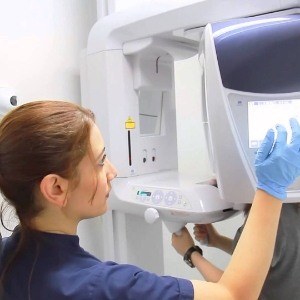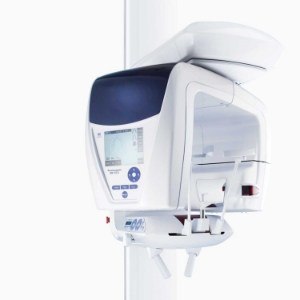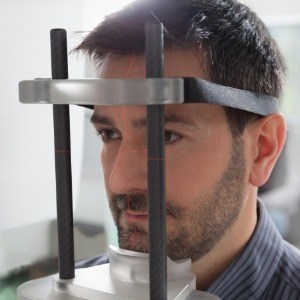Cone Beam Scanner – Saratoga, CA
Taking Your Care to the Next Level

Digital X-rays are an indispensable diagnostic tool in general dentistry and in endodontics. However, we also use another imaging device in order to provide our patients with the best care possible — a cone-beam computed tomography (CBCT) scanner. How does this machine work? Why is it such a valuable tool for your endodontist in Saratoga? What is the scanning process like? Learn the answers to such questions here.
What Is the CBCT Scanner?

Basically, the CBCT machine is a highly advanced X-ray. It uses a cone-shaped beam of radiation to capture hundreds of extremely detailed images. A computer assembles those images into a three-dimensional representation of the area we scanned. Not only does the scanner provide images of the jawbone and teeth, but it also gives us a look at nerve pathways and soft tissues. The CBCT technology is similar to a regular CT scanner that you might see in a hospital, but it exposes patients to less radiation.
Why Is It So Important?

Endodontics has been referred to as the “blind” dental specialty. Don’t take that the wrong way — endodontists are true dental experts who have a high level of knowledge. However, endodontic treatments are the only ones where a dentist cannot perform the procedure and have a clear, complete view of what they are doing at the same time. That is because root canal therapy in Saratoga and similar procedures take place inside of a tooth. Therefore, technology that enables endodontists to fully understand a patient’s condition and their oral anatomy is essential in order to ensure a predictable outcome.
A CBCT scan lets us know what to expect when we are working on a tooth and if we are likely to run into any issues that will complicate the procedure. Digital X-rays, on the other hand, might have shadows that are difficult to interpret; they are unable to provide the precise information we need in order to perform delicate treatments. Regular X-rays are also limited because they provide only two-dimensional images, whereas a CBCT scan offers three-dimensional insight into a patient’s oral structures.
The Scanning Process

The CBCT scanning process is fast, non-invasive, and painless. Here’s what to expect:
- Before the scan, you may need to take off any items that could interfere with the images, such as jewelry, eyeglasses, and removable dental prosthetics.
- You’ll need to remain very still during the scan while the machine’s arm moves around you in a circular motion. We use a J Morita CBCT machine, which has an attached chair for patients to sit in.
- The scan may take 10 – 40 seconds depending on how large the area of interest is.
- Our team will interpret the scan’s results and use them to provide you with the best care possible.
Have Questions or Concerns?

We are happy to communicate with our patients about all of their questions and concerns. If you would like to know more about CBCT technology and its role in endodontics, contact our team today.





